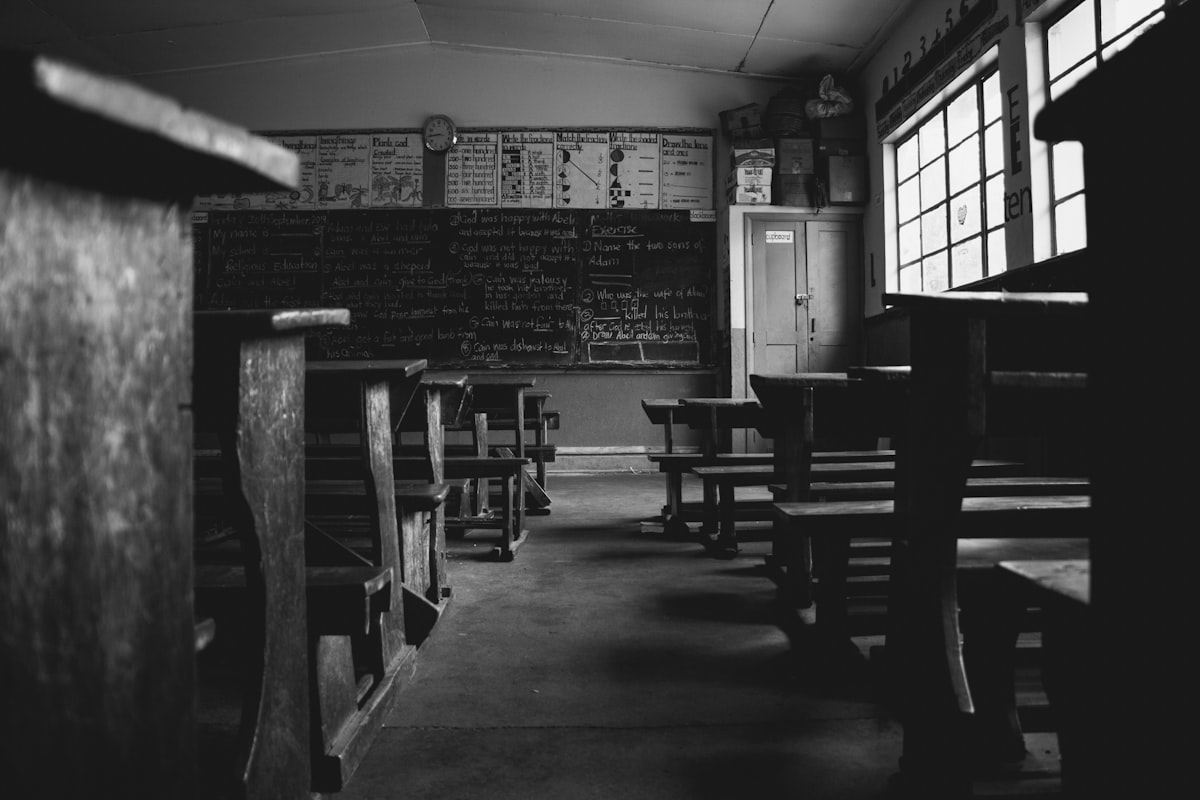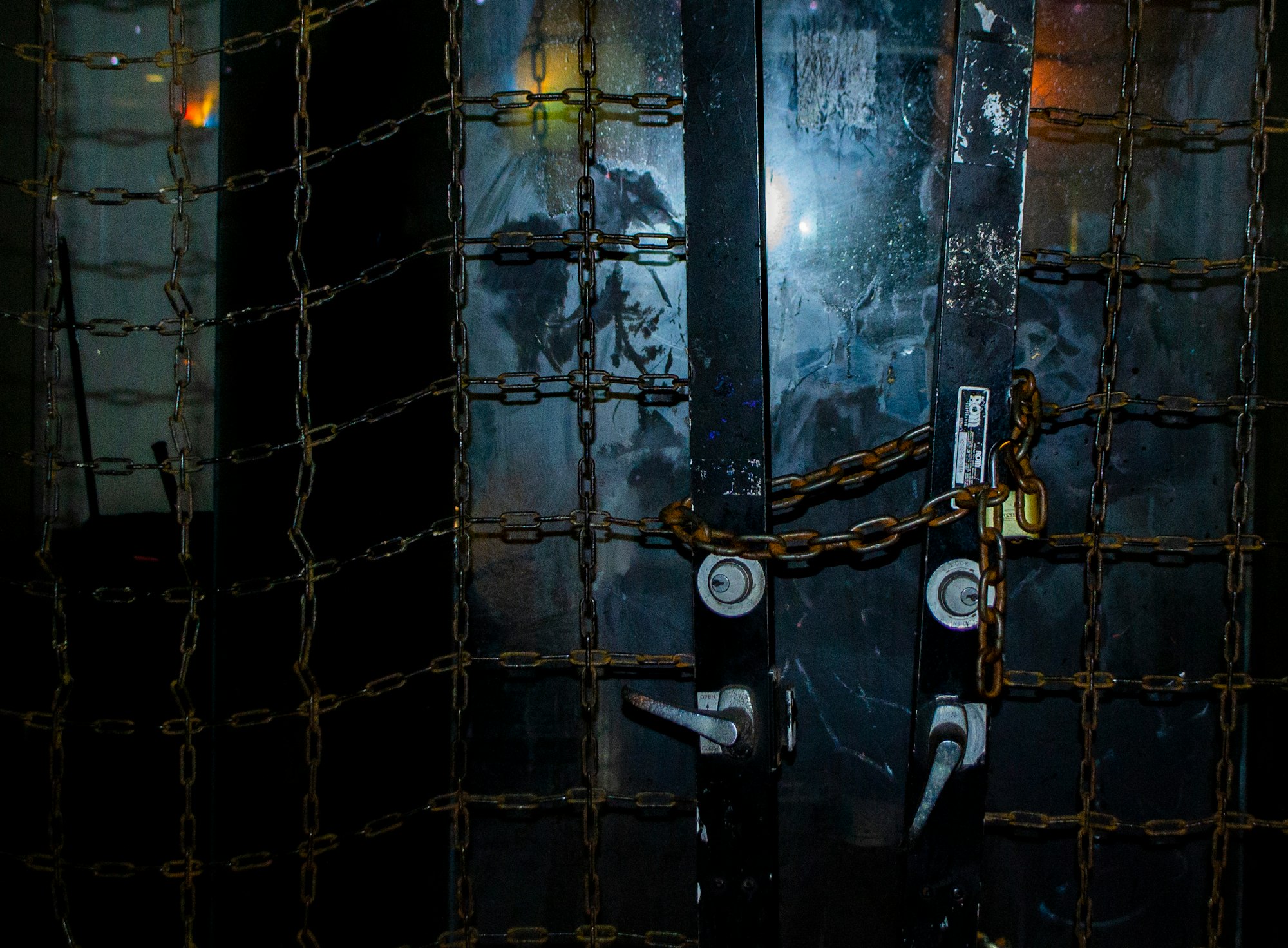Pandemic Education: How to Get Out of the Way and Teach
I’m doing my best teaching in the midst of a global pandemic. Here’s why…

I’m an introvert, so the joke around my house is that I’m living my best life now!
But it’s not a joke. It’s true. While the world outside my door is a scary place full of heartache and frustration, inside my house, I’m doing some of my best work.
Writing, of course, lends itself to this situation. I’ve got the gift of time now. I can close the studio door, ask Alexa to play Anna Tivel or the Smiths or Dawn of Midi, and get down to drafting and crafting.
Teaching, however, is a different animal. We teachers are bunkered in our home offices or on our living room couches or out on our back patios, emailing and LMSing and Zooming at a breakneck pace that seems to be taking us nowhere. We have scurried to put the slide decks and the screencasts out on the wires, transmitting them like messages in a bottle cast into the Pacific.
We feverishly create content to share.
We hit “submit” or “send” or “save.”
We wait.
For educators who value daily contact with their students, believing—rightly!—that good teaching is rooted in building relationships, the experience is disorienting. How do I maintain a sense of community? How do I ensure that students are doing what they’re supposed to be doing? How do I teach when I don’t see my students every day, when I can’t control the flow of information?
These are the wrong questions. They stem from a desire to replicate what you might’ve done in your classroom. But you can’t do that anymore. That’s not how this is going to work. A different medium requires a different solution.
My solution, and the reason that I have been thriving rather than simply surviving, comes from the adoption of three key principles:
- Get out of the way.
- Embrace the mess.
- Put the emphasis on reflection.
Adopting these three principles requires a little faith in the idea that human beings are learning machines. Even when you think your students are falling flat on their faces, if you help them to pay attention to what they’re doing, then you’ll probably find their learning in spite of themselves.

Get Out of the Way
On my ideal day, I wake up around 6am, grab a cup of coffee, spend 30 minutes in meditation and reading, do some reflective journal writing, and then hop into my role as a teacher.
Morning time is my time. The house is quiet. The best of the day lies ahead. I’m rested and ready for what may come. I know lots of folks who feel the same way about their mornings. Maybe it’s the magic of that first sip of coffee or that weird phenomenon where the morning air seems to carry the sounds of nature farther: bird song and wind in the tops of trees. (Ever noticed that?)
I know exactly zero teenagers who feel this way.
This is a natural result of circadian rhythms and all of that. Teens, by and large, are night owls. They would prefer to sleep away their mornings, wake up at noon, spend a few hours in the afternoon doing something active, and then hunker down for the night in front of their TVs or laptops or whatever.
My biorhythms don’t line up with my students, and that’s okay.
As a teacher, I’ve got to see this not as a hindrance or even a challenge, but as an opportunity. If I can find a way to hook students into a project that they can do on their own time, choosing when they will be productive, then I can get them to work on it at some ungodly hour when I’ve been pleasantly snoring away for hours.
I’ve got to get out of the way.
So much of our system of education relies on compliance. We want to control when students study, when they learn, but that’s not really good teaching, is it? When we look at job descriptions for educators, rarely do we see lines like this:
Constrain students to neat workflows that adhere to patterns of typical adult behavior.
Yet, we often act like that’s the case. We expect our students to be ready and alert at 8am; we expect them to have the efficiency and time management skills that we have as professionals in our twenties, thirties, forties, fifties, sixties, and beyond.
The first thing you’ve got to do to become a remote teacher is to drop all of that. (Of course, I would argue that you should get rid of all of that even if you’re not in a remote situation. But that’s off-topic…) Get out of the way. Understand that you cannot control when your students work or at what pace.
You’ve really only got control over a couple of things:
- What you communicate.
- How you communicate it.
After that, it’s up to the students to do their thing. You create the conditions, you create the projects, you can even build in the deadlines along the way. Once you’ve done that, once you’ve built a little virtual learning space, then you’ve just got to get out of the way. You’ve got to let them move in their own time.
Then, when they give you some piece of work, you provide them with the feedback that they need for learning. This is where your pedagogical prowess comes in. Some students will need clear and direct feedback; others require a softer touch. You have to be mindful of their needs. Therefore, you leverage that relationship that you built before this damn virus shut your school down.
You know what each student needs. Give it to them! But you have to give it to them on their time.
Stop trying to control the situation. Get out of the way.

Embrace the Mess
If I took your brain out of your skull and slapped it on the table, it would make a mess. The brain is a messy, gross thing. Getting the brain to learn something is also a messy process that rarely fits into neat boxes.
In a remote teaching situation, you’ve got to embrace this mess in its entirety. Even though your students may all be working on the same project, none of them are going to work on it at exactly the same speed. You can set weekly goals—and that’s probably a good idea, especially to help catch those students who aren’t self-starters—but you will still have students working far ahead or far behind those deadlines.
This is okay.
High school students are not yet adults. While I may expect my colleagues to be able to handle their business in a timely fashion and without too much intervention, I can’t always expect teenagers to do likewise. My job is to help them to move along that continuum from adolescent to adult. I nudge, I push, and occasionally I shove. I do what’s necessary to keep them moving.
But I do not get upset or even discouraged when they have’t yet arrived. I embrace it because it’s an opportunity to learn. Every mistake is an opportunity.
The disjointed reality of dozens or even hundreds of students working at various paces is daunting, perhaps even infuriating. We naturally want everyone to be on the same page. If that were the case, then things would be neat and tidy, and I’d be able to go about my day in an orderly way.
That’s not reality, though.
To handle 80 different students working on 80 different assignments at 80 different paces, you’ve got to find a system to bless that mess and work with it. Personally, I’ve adopted two key systems to help me here:
- Mindfulness and Meditation
- Slack or Teams
This post isn’t a place to go into depth about these, but I’ll hit some highlights.
Mindfulness and Meditation
Honestly, I initially wrote this as a bit of snark, but it’s real. If you’re the sort of person who keeps and sorts the spare screws and Allen wrenches from your IKEA furniture, then you’re going to lose your mind in this situation. You’re gonna need some new tools!
As I mentioned above, I meditate for about thirty minutes every morning. I also do reflective journaling, practice box breathing throughout the day, and do a nightly “what happened today” journal.
None of these tools matters in and of itself. You can scour the internet for them, if you like. Google will yield fantastic results.
What matters is that you have a practice that allows you to look at the mess and say: “OK. Breathe. This looks like a puddle of dog vomit on a Turkish rug, but I’m going to breathe because I know that I can get through this. I know that I can muster the compassion necessary to respond to this student with love, kindness, and generosity.”
If you don’t have a mindfulness practice: get one.
Slack or Microsoft Teams
Here’s the thing: high school students don’t read email.
Here’s the other thing: email isn’t great for this situation.
So, why don’t we ditch it?
I’ve talked to several teachers who have expressed how inundated they feel by their inboxes. They were already treading water trying to figure out how to teach in this environment, but now the number of unread messages in their inboxes, the number of email threads with students, classes, parents, has begun to grow. Sometimes it looks downright exponential!
I wholeheartedly advocate getting away from email and moving to something a little more nimble. Both Slack and Microsoft Teams can save you from the unwieldy inbox. This is not the place for an in-depth review, but I’d like to list a few advantages:
- Text-style messages that are quicker and less formal than email. Communicate with your students in a way that is quick and feels familiar to them.
- Both of these tools are cross-platform and widely available.
- Both tools require a learning curve, but will also allow you to respond to your students’ needs quickly, especially if you embrace the mobile apps.
When we capture our students’ attention, we want to be able to hold it and respond to it. When I have a student who sends me a chat in Teams and asks if I’ll look at his outline for the essay we’re working on, the answer is: “Yes! Send it.” The document is shared and I’m on it. No need to go through the pain of proper email etiquette. Just get down to communicating!
(If you want more on teaching with Slack, check out my guest post over at Ashley Read’s blog.)

Put the Emphasis on Student Reflection
Good remote teaching emphasizes the process.
- How did you attack this project?
- What was your process?
- Did it work?
- What would you differently next time?
- What would you definitely keep the same?
Listen, I know that we want to teach our disciplines. I love writing. I want my students to come away understanding what makes good writing and how to make their own writing read more and more like that great writing. I get it!
But we’re also in the business of teaching our students how to be citizens. Part of being a good citizens is learning what works for you. How do you go about producing your best work? What skills and talents can you find inside yourself to make the world a better place?
With remote learning, if we get out of the way, if we embrace the mess, then we leave students to do their work and then learn more about how they work. By stressing the reflection, we help them to unlock their process. When they unlock their process, they will grow because process is cross-platform and cross-disciplinary.
Reflection provides instruction for life, not for a particular discipline. What a lofty and amazing goal!
Final Thoughts: Access and Self-Care
I recognize that many readers will look at the above and balk at two realities: lack of access and the need for self-care. I want to take a moment to address those.
First, I am very fortunate in that I teach in a community where most students have ready access to high-speed internet connections and laptops or tablets. My school has provided them with tools that allow them to work remotely. This is not the case for every student and every teacher. I am truly blessed.
If you are in a situation where your community lacks this type of access, I would love to hear more about your story. How are you doing this? You are a marvel!
Second, I recognize the importance of self-care. Every day, I disconnect in the evening. No more screens, no more responding to students. I don’t feel guilty about this. They messaged me on their time. I’ll message back on my time. We’ll keep the project moving forward and all will be well. This is part of the mess.
More important than anything else: our health. This is why I really and truly suggest schools invest in mindfulness training for their staff. In order to be happy and healthy and whole, we have to learn to take care of ourselves. That comes before anything else.
Are you thriving in this new environment?
If so, please reach out to me on Twitter (@sbhebert) and let me know how! I’d love to take your tips, use them, and share them with my colleagues!
If not, I’d still love to hear from you. How can we do our best work as teachers in this challenging new environment?